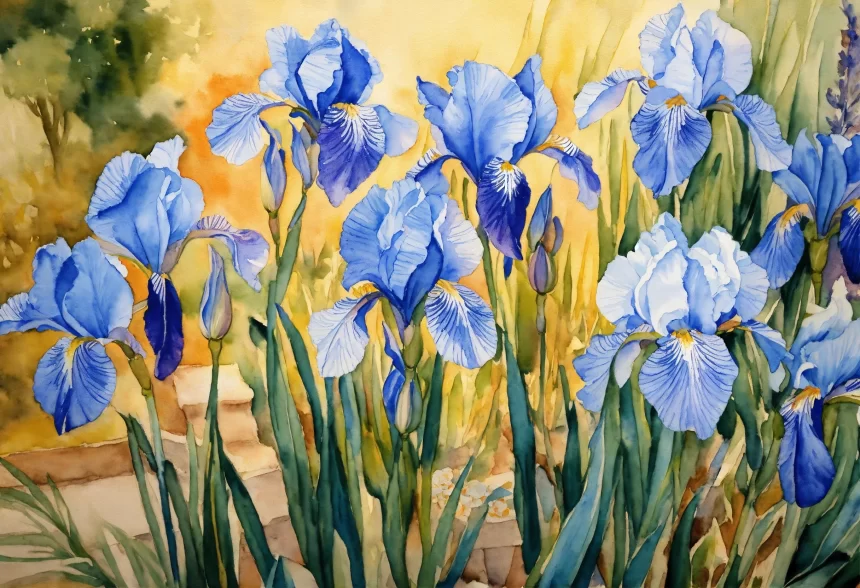Royal blue is a rich, vibrant shade that makes a dramatic statement in any garden. If you’re looking to add a pop of this regal color to your outdoor space, there are several beautiful flowers that come in shades of blue ranging from soft powder to deep indigo. Keep reading to discover 10 gorgeous options that are easy to grow, whether you have beds, borders, containers or a cutting patch.
Delphinium
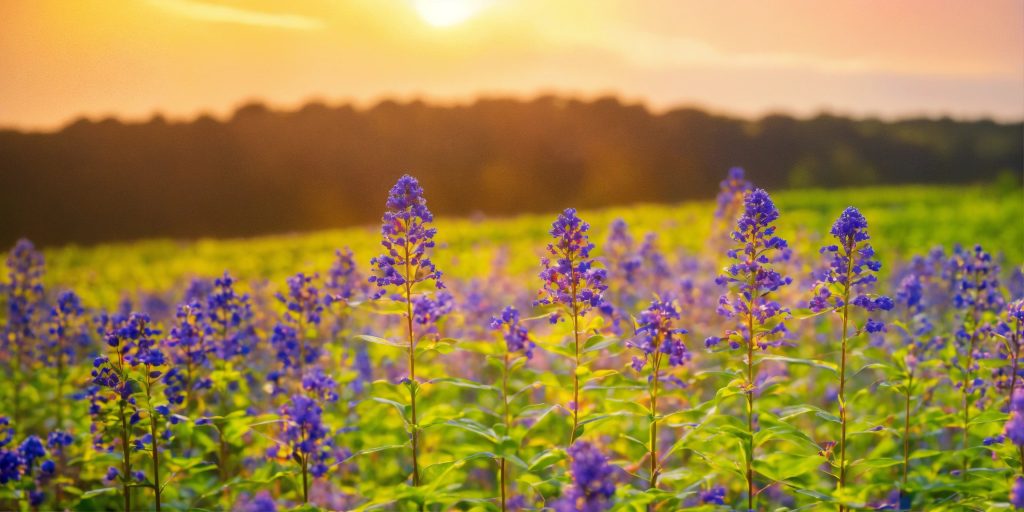
With it’s towering flower spikes that can reach up to 6 feet tall, delphinium is one of the most majestic plants for the garden. Few sights can compare to a delphinium spike covered in hundreds of richly-hued florets ranging from deep gentian to royal blue. Give these perennials full sun and well-draining soil. Stake the plants properly to protect from strong winds. While an individual flower only lasts a week, deadheading spent blooms encourages new buds to open in waves, prolonging the floral display of these iconic cottage garden classics through early summer. Their vertical elegance makes delphinium perfect for borders or cutting gardens.
Popular Varieties
Pacific Giant:
- This delphinium is a hybrid that stands out for its strong, branching flower spikes.
- The flowers are often deep blue and the plants can grow up to 6 feet tall.
- Pacific Giants are great for the back of your garden and need plenty of space to make a big impact.
Blue Bird:
- This delphinium has clear sky blue flowers on stems that are about 30 inches tall.
- It blooms more than once and has a neat shape with many side stems.
- The flowers look pretty through early summer.
- Blue Bird is perfect for the middle of your garden where its color and size can really shine.
Aurora Blue:
- This is a small Chinese delphinium that only grows to about 12 inches tall.
- Even though it’s short, it still has lots of big, bright blue flowers.
- Because it’s compact, Aurora Blue works well along paths, at the edge of your garden, or in rock gardens.
- It’s also a good choice for growing in containers since it doesn’t spread out too much.
Growing Conditions
- Full sun is required for best growth and maximum flower production. Delphinium thrives in zones 3-7.
- Well-draining soil amended with compost is ideal. Good air circulation around plants helps prevent issues with mildew.
- Stake plants to protect them from strong winds. Deadheading spent blooms encourages additional flowering.
Hydrangea
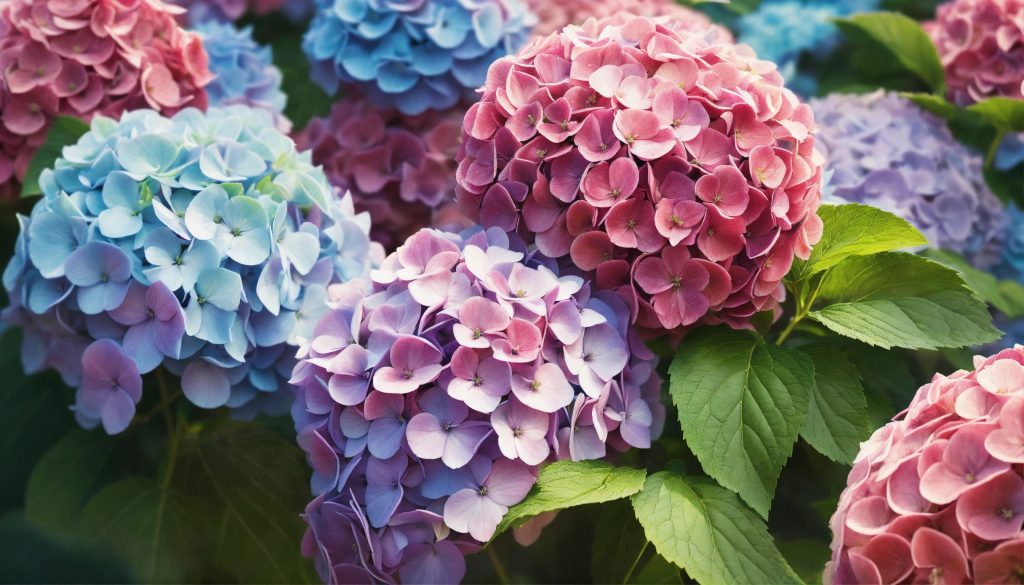
Hydrangea’s giant, fluffy mophead blossoms are classic additions to gardens and floral arrangements alike. Though most commonly found in white or pink, blue and purple varieties have risen in popularity. By amending soil to maintain proper acidity, vibrant violet-blue blooms can be achieved. Give hydrangeas rich, moist soil and part to full shade for lushest growth. Establish new plants with consistent watering, then allow the soil to dry slightly between each watering. Mophead blooms can dry beautifully on the bush for winter interest. For the widest range of rich colors, the Endless Summer series provides intense red, blue and purple tones on the same plant.
Top Choices
Nikko Blue:
- Tough hydrangea with big, round, deep purple-blue flowers.
- Grows up to 6 feet tall.
- Great for the back of the garden or as a special, stand-out plant.
Endless Summer:
- Hydrangea for areas with cold winters (zones 4-9).
- Blooms more than once, with bright royal blue flowers first, then pink-red later.
- Grows to about 4 to 5 feet tall and wide.
Cityline Venice:
- Hydrangea with beautiful lacecap flowers and bright blue centers.
- Does well in hot southern places.
- Flowers don’t wilt easily.
- Stays small, growing to about 3 feet tall and wide.
- Perfect for gardens with limited space.
Growing Conditions
- Choose a spot with some shade or lots of shade to help flowers keep their color.
- Water regularly when first planted, then let soil dry slightly between waterings once settled.
- Add aluminum sulfate to the soil if flower color starts to fade to keep the blue color deep and rich.
Ageratum
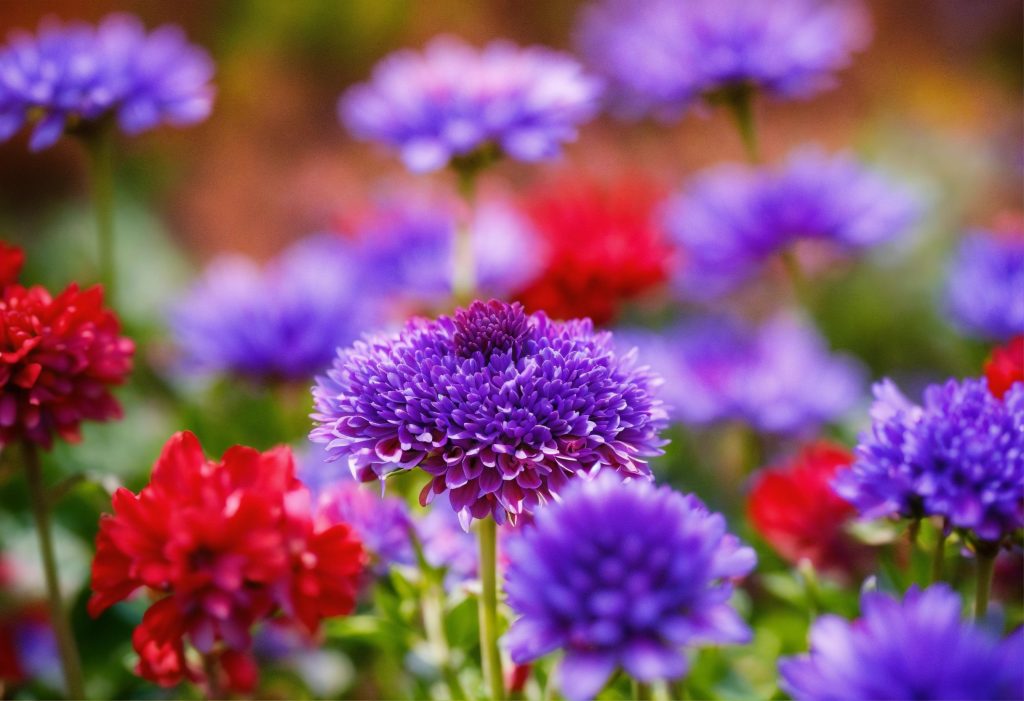
Ageratum is a hardy summer annual that blankets gardens and containers with an abundance of fluffy blue or white pom pom-like flower heads. This heat and drought tolerant plant handles humidity beautifully, flowering nonstop from spring until fall’s first frost in full sun to partial shade beds. Popular varieties like Blue Horizon showcase large, plush royal blue blossoms that stand out beautifully against the plant’s fuzzy green foliage. Give ageratum well-drained average soil with minimal fertilizer to encourage compact growth instead of unwieldy, floppy plants. Shear off spent blooms to maintain neater form and promote waves of flowers right up until the growing season ends.
Top Varieties
Blue Horizon:
- Loved for its big, royal blue flower heads.
- All the plants look the same and grow evenly.
- Grows 12 inches tall.
- Works well in garden borders and pots.
Blue Mink:
- Has soft, fuzzy blue flowers.
- Leaves are a bronze-green color.
- Grows low and wide, about 10-12 inches, instead of tall.
- Perfect for shorter flower beds.
Red Sea Lavender Blue:
- Grows many branches.
- Makes lots of small, fluffy flower clusters.
- Flowers are a mix of blue and violet colors.
- Blooms reliably all season long.
Growing Information
- Start seeds indoors 8 weeks before last expected frost date. Move plants out after danger of frost has passed.
- Space plants 12-18 inches apart in full sun to partial shade beds with average soil and good drainage.
- Deadhead spent blooms to prolong flowering period. Trim plants back as needed to encourage compact growth habit.
Morning Glory
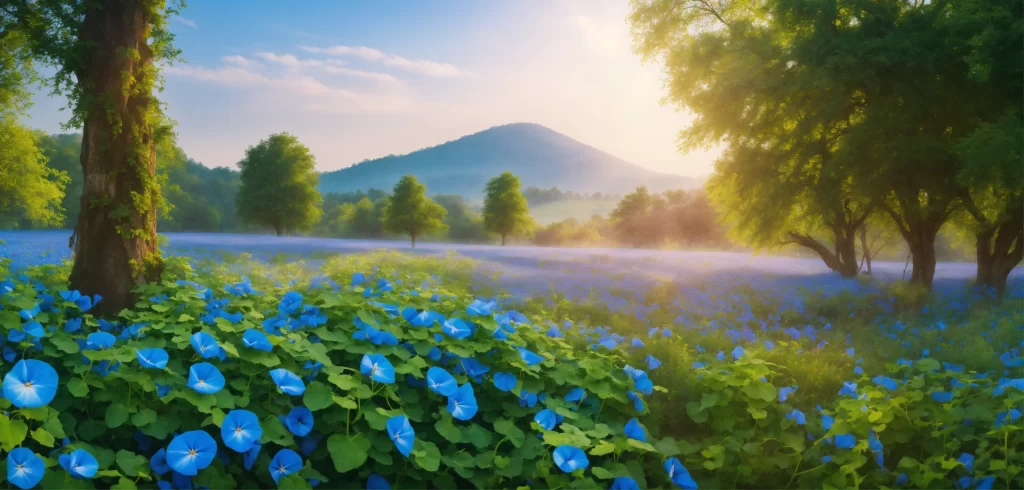
Morning glory is a fast-growing annual vine that produces an abundance of trumpet-shaped blooms that unfold with the sunrise. While individual flowers only last a day, more appear continuously once vines mature. The iconic Heavenly Blue variety showcases brilliant sky-blue blossoms with white centers, eventually climbing 10-15 feet high. Provide sturdy supports like trellises and fences right from the start since vigorous growth begins quickly after sprouting in spring from direct-sown seeds. Pinch back growing tips once morning glories reach the top of their structures to encourage branching and even more flower coverage. Given adequate water and full sun, these temporary vines yield plenty of cheery color.
Best Varieties
Heavenly Blue:
- The most well-known morning glory variety
- Has bright sky-blue trumpet-shaped flowers with white centers
- Grows quickly and can reach over 15 feet high
- Looks stunning when it completely covers fences and arbors
Blue Picotee:
- Has deep royal blue centers surrounded by petals edged in white
- Creates a beautiful contrast
- Adds a cottage garden and old-fashioned feel to any vertical surface it grows on.
Flying Saucers:
- Has unique blooms with ruffled, pinwheel-shaped petals.
- Comes in colors that look like tie-dyed discs.
- Seems to spin upward along strings and lattices.
- Adds movement and texture to the garden.
- Always delights and catches the eye.
Growing Tips
- Direct sow seeds outdoors in average garden soil after danger of frost once the soil has warmed. Water regularly.
- Provide sturdy trellises, fences or cages for vines to climb right from the start. Growth is often rapid once established.
- Pinch out growing tips once vines reach the top of supports to encourage branching and maximize bloom production.
Petunia
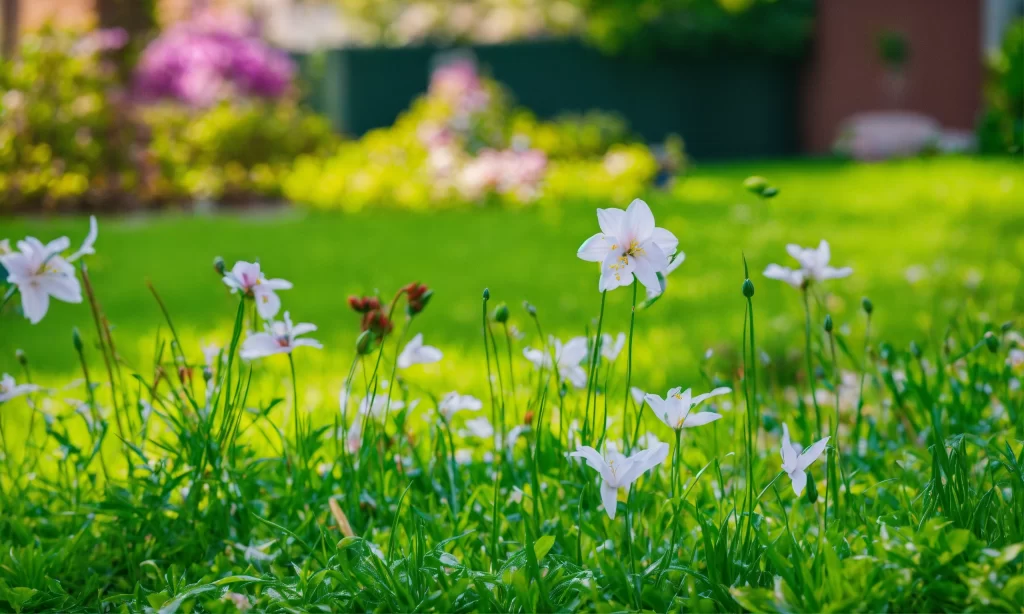
A summer garden favorite, petunias blanket the landscape with vibrant trumpet-shaped flowers from spring up until the first frost. The Grandiflora hybrids offer the largest blooms while Multifloras put out tons of smaller blossoms.
Top Performers
Ultra Blue Grandiflora:
- Has big, trumpet-shaped flowers that are 5 inches wide.
- Flowers are a rich royal purple color with thin white stripes in the center.
- Grows only 10 inches tall.
- Large flowers look beautiful spilling out of hanging baskets and pots.
Dreams Midnight:
- Has velvety dark flowers that look almost black until the sun shines on them.
- Adds a sense of drama and mystery to garden beds.
- The rich purple flowers spread out 14-20 inches wide.
Wave Blue:
- Has a special spreading shape that flows nicely over baskets and mixed beds without growing vines everywhere.
- Creates beautiful royal blue blankets of color.
- The strong plants don’t need much care when given lots of sun and soil that drains normally.
Growing Information
- Start seeds indoors 10-12 weeks before last expected frost and move outdoors after danger of frost has passed.
- Space plants 12-24 inches apart in beds or containers with good drainage and sun exposure to encourage prolific flowering.
- Deadhead spent blooms regularly to promote continuous reblooming from late spring up until hard fall frosts end the season.
Cleome
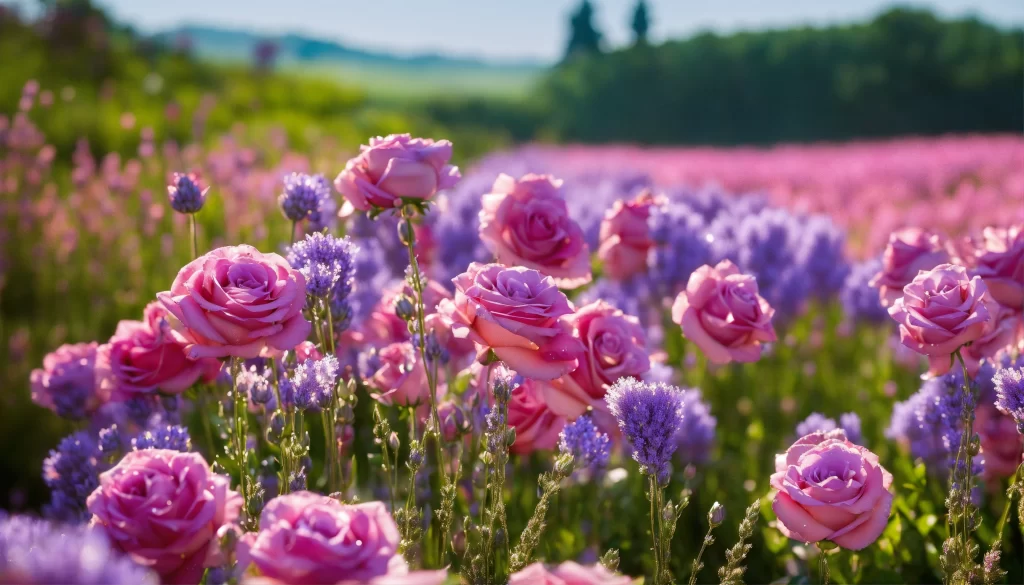
Also known as spider flower, cleome creates airy displays of unique blossoms with long, spidery petals that sway gracefully atop tall stems. Many varieties showcase rich purple and pink bicolor blooms that emerge from eye-catching flower buds in contrasting hues. As heat-loving annuals that thrive through summer, cleomes inject vibrant color into gardens and cut flower arrangements. Give them full sun and well-drained soil. Pinch back growing tips to encourage bushy plants over leggy growth. Deadheading spent spider flowers promotes more blooms while cutting plants back midseason results in a second flowering flush into fall.
Top Varieties
Violet Queen:
- Has bright violet-blue petals with white centers.
- Buds are a pretty rose-pink color, giving a nice contrast.
- Grows up to 5 feet tall.
- Makes a big impact in garden borders.
Senorita Rosalita:
- Has dark purple and hot pink two-tone flowers.
- Adds bright, warm colors to the garden.
- Grows over 3 feet tall.
Helen Campbell:
- Known for its rich royal blue color with a small hint of purple.
- The purple makes the blue color look deeper.
- Provides beautiful blue flowers all season long.
Growing Info
- Direct sow after all danger of frost once the soil has thoroughly warmed in full sun beds. Water regularly.
- Pinch growing tips to encourage bushy, branched growth rather than tall, leggy plants. No staking is required.
- Deadheading spent flowers promotes more blooms while cutting plants back by half midsummer will lead to a second flowering flush into fall.
Verbena
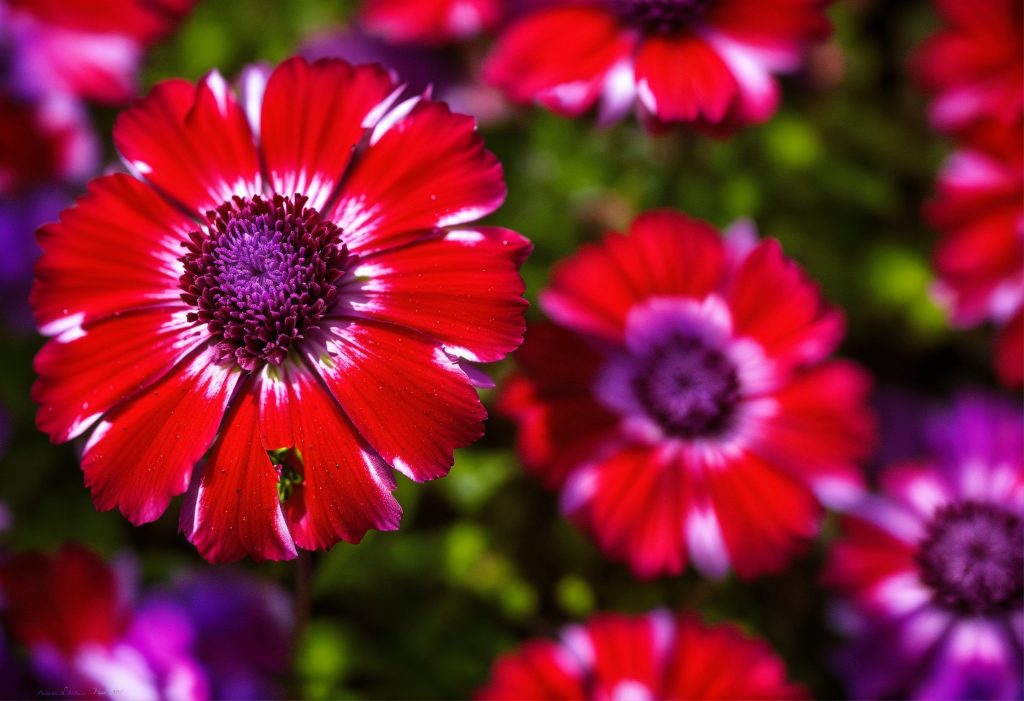
Verbena produces an abundance of tiny five-petaled blossoms all season long that blanket gardens and cascading containers with vivid color right up until fall frosts. Give these vigorous spreading plants full sun exposure along with average to poorer, well-drained soil. Pruning plants back hard midseason will rejuvenate growth and encourage flowering to continue. From vivid purples to bright whites, verbenas come in a diverse range of flower colors that attract pollinators while resisting pests and diseases.
Top Choices
Aztec Blue Velvet
- This type of flower has beautiful, rich purple blooms that are packed tightly together.
- The stems trail down and are completely covered in flowers.
- It’s a great choice for containers and hanging gardens because it’s compact (only 5 inches tall) but spreads out wide (up to 2 feet).
Babylon Deep Purple
- This flower has vibrant, purple-blue blooms with white centers and yellow eyes.
- The dark foliage makes the colorful blooms stand out even more.
- It has a cascading effect, making it a great choice for hanging gardens or containers.
Homestead Purple
- This type of flower grows upright and can reach 12 inches tall.
- It spreads out wide (18-24 inches) and has tall spikes covered in beautiful and regal purple blooms.
- It’s a great choice for garden beds and borders because of its tall and colorful spikes.
Growing Information
- Start seeds indoors up to 10 weeks before last frost date, moving established plants outside after danger of frost has passed.
- Give verbena full sun exposure and average to poorer well-drained soil. Avoid fertilizing too heavily which can lead to floppy growth.
- Shear plants back hard midseason to rejuvenate growth and encourage flowering until fall frosts end the display.
Lobelia
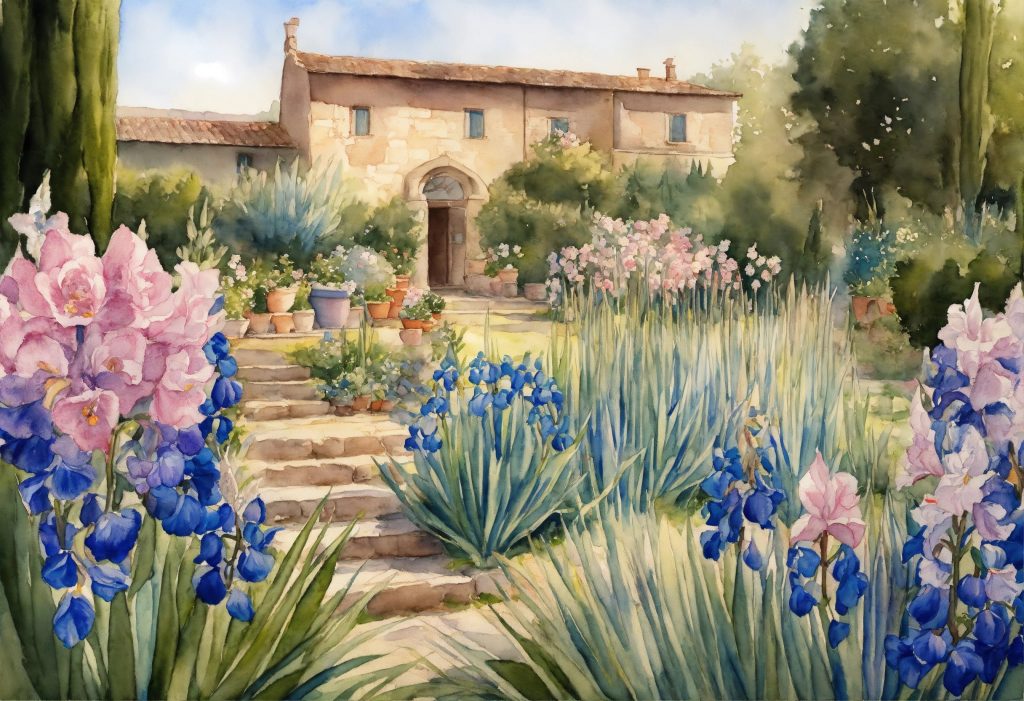
A shade-loving annual, lobelia blankets areas with graceful displays of tiny blossoms that carpet the garden all season with vivid color. The blooms also attract pollinators with their sweet nectar. Give lobelia filtered sun to partial shade exposure along with moist, organic soil for beautiful performance. Popular varieties like Regatta Midnight Blue offer hundreds of saturated royal blue flowers covering low, dense mounds of foliage. Shearing plants back midseason maintains compact shape and encourages flowing color right up until fall.
Top Varieties
Riviera Blue:
- Has bright, deep blue flowers.
- Grows in neat, compact mounds.
- Reaches about 4-6 inches tall.
- Perfect for edging, borders, and containers.
Crystal Palace:
- Features rich, dark blue flowers with white eyes.
- Has bronze-green foliage that contrasts nicely with the flowers.
- Grows 4-6 inches tall and wide.
- Works well in borders, beds, and hanging baskets.
Sapphire:
- Produces vibrant, sapphire-blue flowers.
- Has a trailing growth habit, making it ideal for hanging baskets and window boxes.
- Grows up to 2 feet long.
- Blooms continuously throughout the summer.
White Lady:
- Has pure white flowers that stand out against green foliage.
- Grows in compact, bushy mounds.
- Reaches 6-8 inches tall and wide.
- Perfect for brightening up borders and containers.
Laguna Sky Blue:
- Features soft, sky-blue flowers with white eyes.
- Has a semi-trailing growth habit.
- Grows 6-12 inches tall and wide.
- Works well in hanging baskets, window boxes, and as a ground cover.
Growing Tips
- Start seeds indoors up to 12 weeks before your last expected frost date. Move established plants out after danger of frost has passed.
- Give plants filtered sun to partial shade with moist organic soil for best growth and flowering performance.
- Shear plants back hard midseason to maintain compact form and encourage flowering until fall.
Bachelor’s Button

Also known as cornflower, bachelor’s button is an annual that produces abundant rounded flower heads ringed with frilly petals resembling colorful pom poms. Easy to grow, it injects cottage garden charm into any sunny flower bed or bouquet. Bachelor’s button comes in a variety of hues, but rich royal blue varieties like Black Ball and Blue Boy showcase this flower at it’s most regal. Simply deadhead spent blooms to encourage more flowers right up until frost. Save some seed heads to sow again next year for reliable color.
Top Performers
Blue Boy:
- Known for its big, double royal blue flowers that can be up to 2 inches wide.
- Adds a lot of beautiful color to the garden.
- Grows 18-24 inches tall.
- Works well in borders and gardens where you want to cut flowers for bouquets.
Black Ball:
- Has unique, very dark midnight purple flowers.
- Makes a bold statement in flower beds and arrangements.
- The shiny, dark color catches the light in a pretty way.
Polka Dot Mix:
- Has two-tone flowers with dark blue centers and white petals around the outside.
- The contrast between the colors is eye-catching.
- Gives a lovely old-fashioned look to any garden be.
Growing Information
- Direct sow seeds in early spring once threat of hard frosts has passed. Space plants 8-12 inches apart in full sun.
- Cut back spent flower heads to encourage continuous bloom production into mid fall. Faded flowers can also be dried very easily.
- Save some seed heads at end of season to sow again next spring for reliable color in the garden year after year.
Bellflower
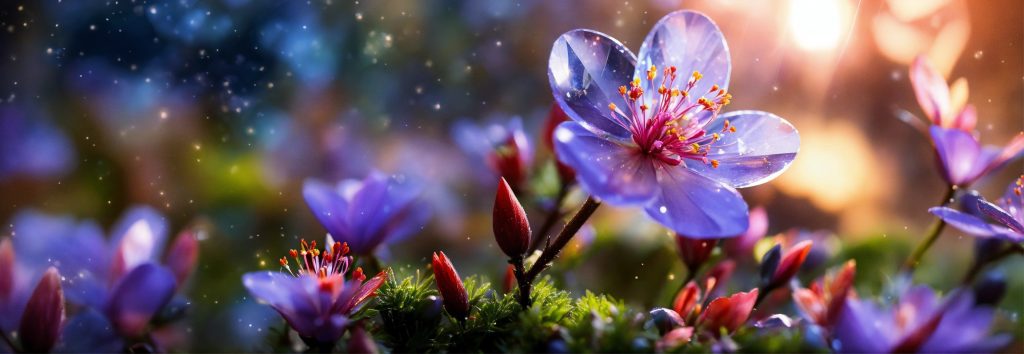
Also known as campanula, bellflower showcases abundant lavish, bell-shaped blooms atop tidy mounds of leaves. Ranging from rich blues to light pastel hues, the five-petaled flowers add lovely texture and dimension to garden beds, borders and cut arrangements. Give campanulas full sun exposure along with well-drained soil. Establish new plants in spring, spacing 1-2 feet apart. Deadhead spent blooms to encourage reblooming. Distinguished varieties like Sarastro and Kent Belle flaunt deep royal purple bells that really stand out, while Birch Hybrid offers rare true blue blooms among the many blue-violet and lavender shades found in this diverse perennial group.
Top Varieties
Adriatic Bellflower
- Grows low to the ground and forms clumps
- Has clusters of star-shaped flowers in lavender-blue color
- Attracts butterflies and other pollinators
Bluebell
- Perennial plant that comes back year after year
- Has tiny, bell-shaped flowers in blue or white color
- Often grows in woodland areas and under trees
Peach-Leaved Bellflower
- Forms clumps and sends up tall stems.
- Has large, outward-facing flowers in shades of blue and white.
- Leaves resemble peach leaves, hence the name.
Serbian Bellflower
- Spreads quickly and forms mounds.
- Has star-shaped flowers in pale violet-blue color.
- Produces flowers in mid-to-late summer.
Growing Tips
- Start seeds indoors up to 10 weeks before last spring frost. Move new plants into the garden after danger of frost has passed.
- Most campanulas thrive in full sun with well-drained soil and average fertility and moisture. Good air circulation aids growth.
- Cut back spent flower stems after blooms fade to encourage reblooming. Trim whole plant back hard after a few years to renew.
Conclusion
With their jewel-toned hues and elegant blossoms, these picks provide outstanding options for incorporating regal royal blue flowers into your beds, borders and container displays this coming growing season. Even just adding one or two of these beauties will give your garden an instant dose of striking color.
FAQs
Some of the most vibrant true royal blue flowers include delphinium, morning glory, cleome, verbena, lobelia and bachelor’s button. Hydrangea and bellflowers can also produce rich blue tones in the right soil conditions.
Blue flowers contain no red pigments, only mixing blue and white or blue and green pigments to create different hues. Purple flowers contain a blend of blue and red pigments. This gives purple tones more dimension while rich blue shades serve as primary colors that really pop.
The soil pH level impacts how blue pigments develop in some blossoms like hydrangea and delphinium. As soil becomes less acidic over time, anthocyanin pigments shift from blue to reddish purple. Amending soil can help maintain brighter blue hues.
Blue blooms thrive best in acidic soil with a pH between 5.5-6.5. Leaf compost and pine needle mulch help lower soil pH naturally over time. Aluminum sulfate or cottonseed meal also aid acidity.
Intense sunlight, wind exposure, insufficient water and infertility can all cause blue blossoms to fade faster. Dry soil inhibits full color development as well. Protect plants from elements and practice consistent watering for flowers to maintain maximum color integrity.


